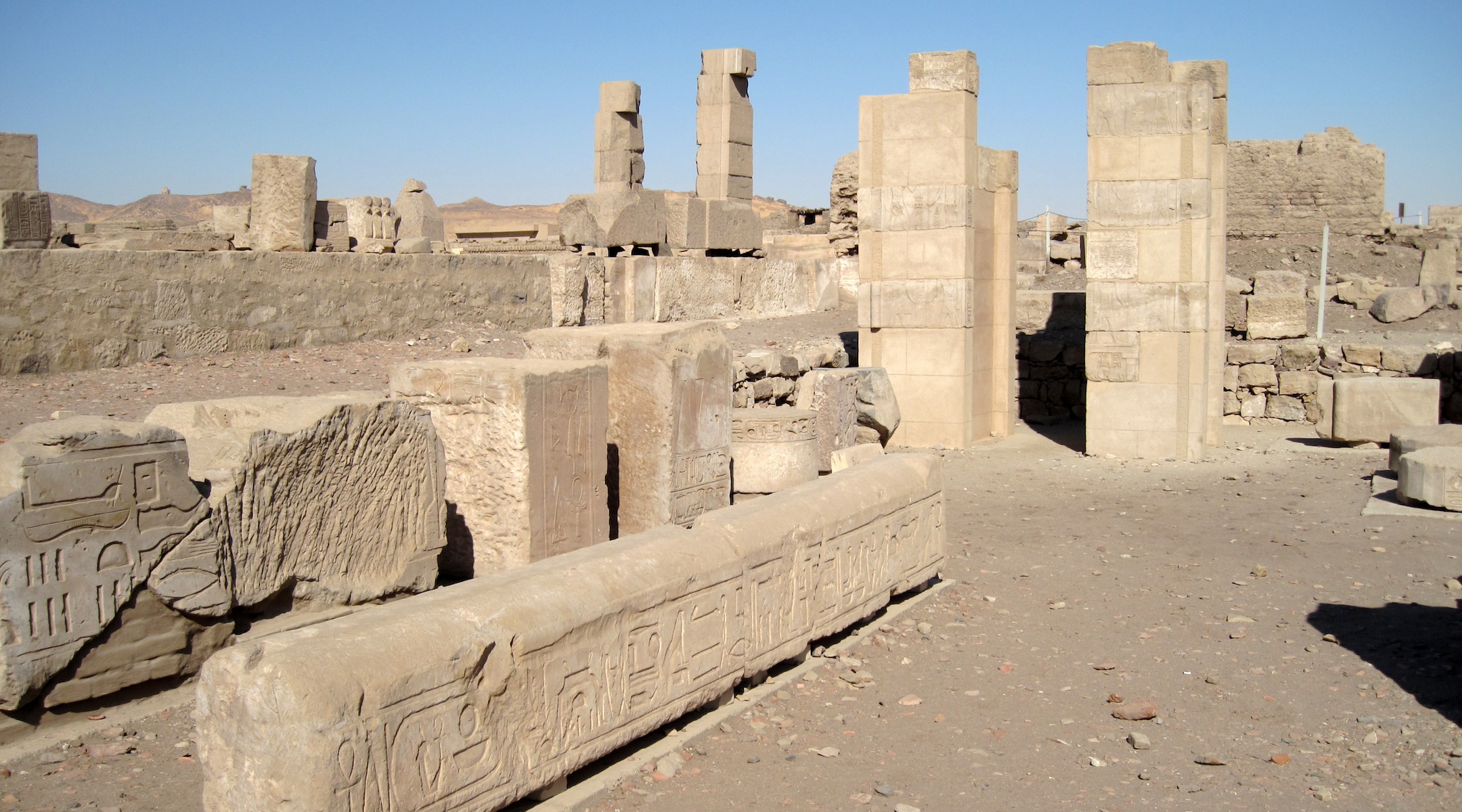This story was originally published on My Jewish Learning.
(JTA) — Years ago, my family and I visited the ancient Roman baths for which the city of Bath, England, is known and named. An exhibition there displayed over 100 “curse tablets,” dated from the second to fourth centuries CE, asking for the intervention of the goddess Sulis Minerva to return stolen goods and curse the thieves. I was fascinated by these pleas for divine intervention in a personal loss. Yet I never expected to find a similar prayer formula in an ancient Jewish context halfway across the world.
While the Temple in Jerusalem is the only Jewish temple mentioned in the Bible, there were other Jewish temples, including one in the Egyptian city of Elephantine. Built in the 6th century BCE and destroyed in 410 BCE by priests of the Egyptian god Khnum, the temple was a place where local Jews, often Israelite soldiers hired by Egypt, could offer sacrifices. According to some scholars, the description of the temple at Elephantine is similar to the mishkan, or tabernacle, described in the book of Exodus.
One of the interesting features of this community, aside from that it performed Jewish sacrifices outside of Jerusalem, is the presence of female functionaries in the temple. One of these, Tamet, was a freed slave who was dedicated as a lachanah, or temple servant. Her husband, Anani son of Azariah, was a lachan, the masculine version of the same term. Both of them lived in a house that shared a wall with the temple.
Israeli archaeologist Gad Barnea has recently translated a fragment from Elephantine, written on a pottery sherd. Barnea has indicated that the text is part of a ritual intended to get vengeance for theft, in a somewhat similar way to the tablets at Bath. The inscription partly reads: “Behold, my tunic, which I left in the house of Yah … command the lion and let him consecrate it….” In this ritual, an individual dedicates a tunic to the temple, thus granting it to the Israelite god. (The “lion” is a term indicating either the deity or a priest.)
In rituals like this, the tunic would be a replica of the stolen one, and God would thus become the owner of the stolen property. God would then seek out the thief for punishment. This type of ritual transaction, according to Barnea, occurred throughout the Mediterranean region. The tablets of Bath are simply a slightly different ritual mechanism for a similar purpose: cursing the thief and compelling the return of stolen property. This ritual is not mentioned in the Torah, but the Torah does discuss property, such as fields and livestock (Leviticus 27:28), being dedicated to a sacred shrine.
One of the most fascinating aspects of the Elephantine inscription is that its language suggests a Jewish priestess is conducting this ceremony. She is the one who “commands the lion” to consecrate the tunic, according to Barnea’s reading of the text. Similarly, in the Jewish temple later built in Leontopolis, another ancient Egyptian city, a fragmentary text refers to a kahenah, a feminized version of the Hebrew term for priest, kohen. The text found at Elephantine seems to indicate that the biblical norm of having only male priests was not universal. How ironic that the record of a theft might one day allow us to glimpse a woman’s role that was stolen from history.
The religion scholar Bernadette Brooten also reports Jewish gravestones where women are described as priestesses, including one in Leontopolis. It is even possible, as I have been suggesting in my writing elsewhere, that in ancient Israel proper, there may have been women with the title kahenah or kohenet. One of the gifts of this fragment from Elephantine is that it gives us a more diverse picture of who could be a spiritual leader among ancient Israelites, and perhaps might inspire a broader leadership model today. If this priestess is our ritual ancestor, might that affect our understanding of the past and our Jewish practice in the present?
We’ll never know if the Jewish man in Elephantine got his tunic back, or why it was important enough to him that he went to the priestess in the temple. Yet his attempt to make his plight known to God has come down to us, and has alerted us to the existence of a woman who conducted rituals for Egyptian Jews, a reality we might otherwise not have discovered. How extraordinary the mechanisms by which something lost can be found again.
JTA has documented Jewish history in real-time for over a century. Keep our journalism strong by joining us in supporting independent, award-winning reporting.







